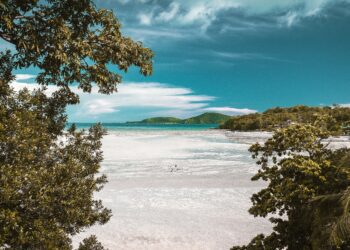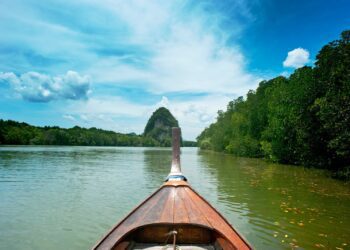For most people, Antarctica is a continent full of snow and ice. But for those who know about it, Antarctica is home to one of the world’s most extreme places – a place where temperatures can hit -55 degrees Celsius and wind speeds can reach over 170 kilometres per hour. In this blog post, we will explore everything you need to know about Antarctica – from its geography to the wildlife that inhabits it. We will also provide tips on how you can visit this beautiful continent and experience all that it has to offer.
What is Antarctica?
Antarctica is a continent that sits on the southernmost tip of the world. It’s also one of the most remote places on earth, averaging over 1,500 kilometers from the nearest coastline. This makes it an incredible place to explore – especially if you’re lucky enough to visit during winter when temperatures average -25C or below.
Despite its extreme cold, Antarctica is home to many different types of landscapes and wildlife. The renowned Victoria Land mass dominates the eastern half of the continent while the western half is dominated by mountains, valleys and ice shelves. There are also vast marine ecosystems off Antarctica’s coasts.
The history of Antarctica is full of mystery and intrigue. Settlers first began exploring the continent in 1820 but it wasn’t until 1892 that anyone set foot on its ice-covered surface. Since then, Antarctica has been home to dozens of research stations and airports – making it one of the busiest areas on earth!
The Geography of Antarctica
Antarctica is one of the most remote, inaccessible, and desolate regions on Earth. With a total land area of 14 million square miles, it’s about the size of North America. Only about 1 percent of Antarctica is hospitable to humans. The rest is covered in ice and snow.
The continent is divided into three major regions: the Antarctic Peninsula, East Antarctica, and West Antarctica. The Antarctic Peninsula is the tip of the continent and is home to many scenic landscapes including glaciers, mountains, and misty valleys. East Antarctica is a large region stretching from the Antarctic Peninsula to the South Pole. It’s mostly flat and contains some of the world’s largest ice shelves. West Antarctica is home to some of the tallest peaks on Earth as well as deep ocean trenches.
The climate in Antarctica is extreme because it’s far from any major body of water or other sources of heat. The coldest temperatures ever recorded on Earth were in Antarctica: −89 degrees Fahrenheit (−128 degrees Celsius). Average summer temperatures are around 26 degrees Fahrenheit (14 degrees Celsius), but can reach up to 86 degrees Fahrenheit (30 degrees Celsius) during extreme heat waves. In winter, temperatures can plummet below 0 degrees Fahrenheit (minus 18 degrees Celsius).
The Climate of Antarctica
The climate of Antarctica is one of the most extreme on Earth. The continent is located in the middle of the southern hemisphere, far from any major land masses, and its location near the Antarctic Convergence Zone means that it experiences both cold air masses from the south and warm air masses from the north. In addition, Antarctica has a high altitude, which contributes to its severe weather conditions.
In general, temperatures range between -2°C (28°F) in winter to 25°C (77°F) in summer. There are also occasional extreme temperature variations, with readings as high as 48°C (118°F) recorded on Mount Erebus in 2010. Winds also play an important role in Antarctic weather, with prevailing westerly winds tending to bring cold fronts that can cause powerful rainstorms and snowstorms.
Wildlife of Antarctica
Antarctica is a landmass located in the Southern Hemisphere, almost entirely surrounded by the Antarctic Ocean. This remote and pristine continent is home to an array of wildlife, ranging from penguins to seals to elephants.
The flora and fauna of Antarctica are largely dependent on the climate and environment. The region experiences very cold winters and hot summers, which can result in a variety of plant and animal life becoming extinct or unable to survive. However, Antarctica’s extreme conditions also offer opportunities for unique species to thrive.
Penguins are the most commonly seen wildlife in Antarctica. These flightless birds live in colonies of up to 50,000 individuals and feed on krill, a tiny shrimp-like creature that forms the staple diet of most Antarctic animals. Penguins are considered an indicator species for the health of Antarctic ecosystems and are vulnerable to environmental changes such as climate change.
Seal hunting is another common activity in Antarctica. These marine mammals grow as large as two feet long and can weigh over 200 pounds. Seals hunt primarily for penguin chicks, but will also consume smaller prey items such as fish, squid, and crustaceans. Seal populations have been declining due to human activity such as commercial hunting, pollution, and habitat destruction.
Elephants are one of the most iconic creatures found on Antarctica. These giants can reach weights of over 500 pounds and live up to 40 years old. Elephants rely on vegetation for food and drink, which makes
History of Antarctica
The first humans to set foot in Antarctica were four American explorers who ventured there in 1820. The continent was officially discovered by a British expedition in 1837 and was named after the Antarctic Ocean, which was first sighted by Capt. James Cook while exploring the Pacific Ocean. Antarctica is the world’s largest ice continent and covers an area of 14 million square kilometers (5.5 million square miles). It is also the driest and windiest place on Earth.
During the early years of exploration, it was not known whether Antarctica would be hospitable to human habitation. The cold, harsh climate posed a number of challenges for early explorers, who had to contend with everything from frostbite to high-altitude sickness. Despite these difficulties, however, Antarctica has since become one of the world’s most popular tourist destinations owing to its unique scenery and unspoiled environment.
Today, Antarctica is home to a large number of indigenous wildlife species, including several types of seals, penguins, lemurs and australopithecines (the earliest known human ancestor). The continent also contains vast amounts of ice resources, including significant deposits of coal, oil and natural gas. This makes Antarctica a key player in global energy security strategies.
Antarctica has been explored extensively over the years and continues to be a source of fascination for scientists and tourists alike. As one of Earth’s last unexplored places, it holds many secrets still waiting to be unlocked
Tourism in Antarctica
Antarctica is a land of extremes. It is the coldest place on Earth and has the highest mountain peaks, including Mount Everest. The continent also supports the world’s largest desert, Antarctica’s Dry Valleys. In recent years, tourism to Antarctica has increased as people have become more aware of its many attractions.
There are several ways to see Antarctica: on a guided tour, as part of a scientific expedition, or DIY via an Antarctic cruise. Guided tours give travelers access to some of the best-known destinations and can include everything from hiking in the stunning scenery of Mount Erebus to kayaking through pristine ice shelves. Experienced guides will help you make the most out of your visit and ensure that you have a unforgettable experience in one of Earth’s most beautiful places.
Antarctica is home to some incredible wildlife, including seals, penguins, whales and lemurs. Many visitors try to spot these creatures while on tours or during their own visits outside official tourist areas. Penguins are perhaps Antarctica’s most famous residents and can be found nesting everywhere from coastal areas to high in the mountainsides. Watching these fluffy birds waddle about is definitely an experience not to be missed!
One way to enjoy Antarctica without leaving home is by travelling there aboard an Antarctic cruise ship. Cruises allow travelers complete freedom to explore the various ports and islands that make up this fascinating continent while enjoying all that Antarctica.





















